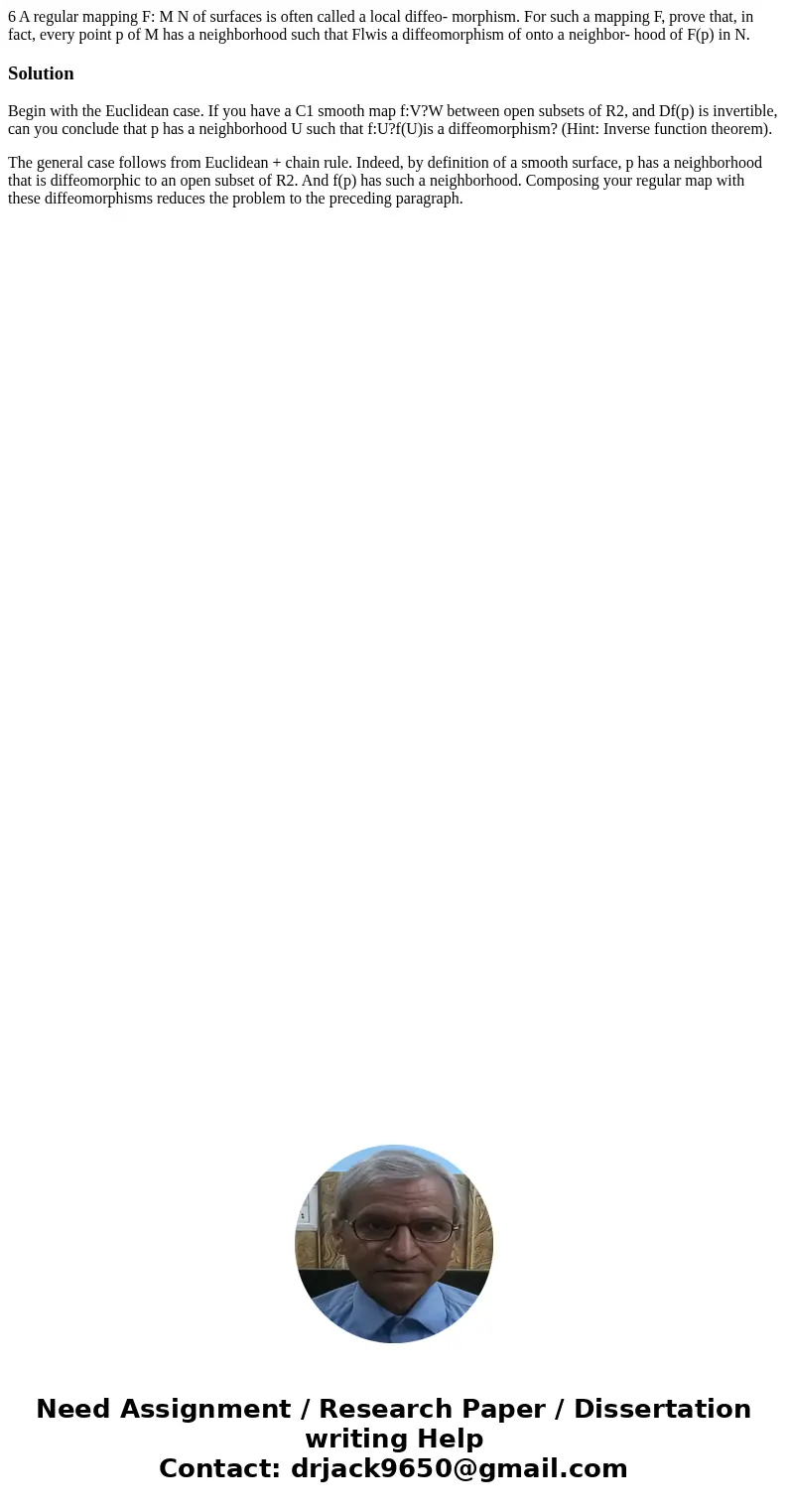6 A regular mapping F M N of surfaces is often called a loca
6 A regular mapping F: M N of surfaces is often called a local diffeo- morphism. For such a mapping F, prove that, in fact, every point p of M has a neighborhood such that Flwis a diffeomorphism of onto a neighbor- hood of F(p) in N. 
Solution
Begin with the Euclidean case. If you have a C1 smooth map f:V?W between open subsets of R2, and Df(p) is invertible, can you conclude that p has a neighborhood U such that f:U?f(U)is a diffeomorphism? (Hint: Inverse function theorem).
The general case follows from Euclidean + chain rule. Indeed, by definition of a smooth surface, p has a neighborhood that is diffeomorphic to an open subset of R2. And f(p) has such a neighborhood. Composing your regular map with these diffeomorphisms reduces the problem to the preceding paragraph.

 Homework Sourse
Homework Sourse